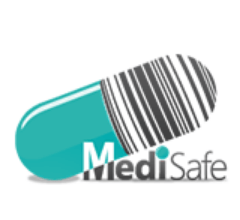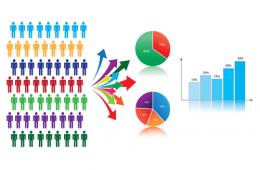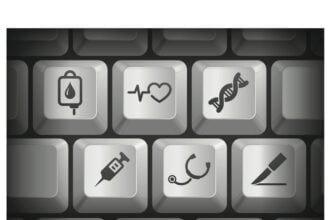For a parent of a child with cystic fibrosis, a new drug that could eradicate symptoms could be a God send. The same could be said of a parent of child with Angelman’s syndrome. For a patient with lung cancer, a drug that is more than marginally effective would be wonderful. And for a person with early Alzheimer’s or their loved ones, a drug that might actually reverse the disease would be incredible.
For a parent of a child with cystic fibrosis, a new drug that could eradicate symptoms could be a God send. The same could be said of a parent of child with Angelman’s syndrome. For a patient with lung cancer, a drug that is more than marginally effective would be wonderful. And for a person with early Alzheimer’s or their loved ones, a drug that might actually reverse the disease would be incredible.
New drugs are approved by the Food and Drug Administration (FDA) regularly. Some are modest improvements over older drugs but some are true game changers. Some drugs approved for specific indications in the past are found to be useful in other conditions or situations. Some only work in very specified subgroups and some look promising in animals but have not been tested in humans yet. And many new drugs are very expensive. Four drugs are good examples that raise dilemmas. One dilemma is whether or how to pay for a very expensive medication and the other is whether one should consider using a drug, approved for another indication, if in an animal model of a serious condition it holds promise but has not been properly vetted in human clinical trials nor approved for this indication by the FDA.
Cystic fibrosis affects about 30,000 Americans. It is generally fatal by the mid-30s’. Genomic mutations lead to defects in the cystic fibrosis transmembrane regulator (CFTR) protein thereby preventing water and chloride from passing through the cell membrane resulting in thick viscous secretions that clog lung tissues. There are multiple CFTR mutations that cause cystic fibrosis. One of them, G551D, is present in about 4% of patients (about 1200 in the USA) with cystic fibrosis. Vertex Pharmaceuticals, Inc. has produced a compound called ivacaftor (Kalydeco) which has recently been approved by the Food and Drug Administration to partially correct the cystic fibrosis defect in this and only this subgroup of CF patients. It is a true game changer. But the price is nearly $300,000 per year and it will be needed for a lifetime. What does a parent do who does not have excellent insurance, any insurance or whose insurance requires hefty co-pays?
Lung cancer affects about 200,000 Americans per year. The drug erlotinib (Tarceva) was found to be effective in a small number of patients, generally among those whose tumor expressed the gene EGRF; it is these patients and only these patients who get the substantial responses. It’s a real advance in a disease that has been stubbornly resistant to treatment. But the drug is likewise very expensive, on the order of about $90,000 for a full treatment cycle. Improvements are real but still short lived. Is it worth it? This same dilemma pertains here as well. The patient will still die in relatively short order. What if paying for such a drug depletes a spouse’s financial reserves; should they decide to proceed with the treatment of not?
Alzheimer’s is of course very common (about 5.4 million in the USA today) and as the population ages there will be more and more individuals affected. There are some drugs available today but in general they are of little value in slowing progression or reversing memory loss. Now there is real excitement that a drug marketed for a completely different condition might be useful. The cancer drug bexarotene (Targretin), given orally, had a major impact on mouse brain cells while rapidly improving memory. Apparently it activates a gene that produces apolipoprotein E (ApoE) in the brain. The ApoE helps remove the beta-amyloid thought to be the substance that creates the plaques of Alzheimer’s. The plaque in these mice were reduced by 50% within 72 hours and by 75% within two weeks. (Science, February 9th). Clinical trials will be underway to determine if the drug will work in humans and if so, in what dose and timing. There is an old adage that results in mice do not necessarily predict results in humans. As a general rule, a physician would be loath to recommend using an untested drug in such as situation. But would a patient or the patient’s loved ones push for trying it out now, even before clinical trials are completed?
Angelman’s syndrome is a disorder in which there is a genetic mutation of the maternal Ube3a gene on chromosome 15 such that it is not expressed. The paternal gene, although normal, is suppressed in its action. The clinical result is a developmental disorder with speech impairment, reduced intellectual capacity, movement disorders and usually a happy demeanor expressed with frequent laughing. A report in Nature (December 21, 2011) demonstrated that topoisomerase inhibitors could activate (unsilence) the normal parental Ube3a gene in a mouse model. Among the active topoisomerases were topotecan and irinotecan, each approved by the FDA for treating certain cancers. As for Angelman’s syndrome, clinical trials are just beginning to determine if the mouse data can be replicated in humans and, if so, what is the best dose, route of administration and length of therapy. As with bexarotene and Alzheimer’s disease, this will take years to complete. So if you are a parent, do you quietly sit back and wait or, even though there is not human data, do you press your physician to give one of these drugs a try on your child?
The dilemma surrounding cost of new drugs is becoming more and more acute. There are now many drugs that are quite expensive, well beyond nearly any individual’s financial means to pay for them themselves. In general this is because a number of new drugs are being produced not for a mass market (such as statins for lowering cholesterol or a drug to lower blood pressure) but for a very small market such as the examples with cystic fibrosis and lung cancer where the drug is used for only a small subgroup of patients. The possibility is real that a family simply cannot afford the drug or that it will reap havoc with the family’s finances for years to come.
The dilemma about whether to try using a drug not approved for a disease at hand such as Alzheimer’s or Angelman’s syndrome yet on the market for another condition is equally vexing. Good clinical science says not to do so. But for the patient or patient’s family when the situation is grim, the desire is to plow ahead. The problem is that there are often reports in the press based on laboratory science that suggests a possible breakthrough. But it is equally true that most of these do not pan out when tested in the human situation. Carl Zimmer in the Wall Street Journal on March 10, 2012 wrote of Jackie Fenn’s “Peak of Inflated Expectations” that is all so often followed by the “Trough of Disillusionment.” And that could well be what happens here as these drugs are tested in human clinical trials.
The kids with CF that get Kalydeco will have a great benefit; those with lung cancer that receive Tarceva have a good shot at some meaningful benefit. Both will pay a hefty price. But for those with Angelman’s syndrome or Alzheimer’s, the possibilities for improvement are likely a long way off.
Comments from readers about both of these dilemmas are invited.








